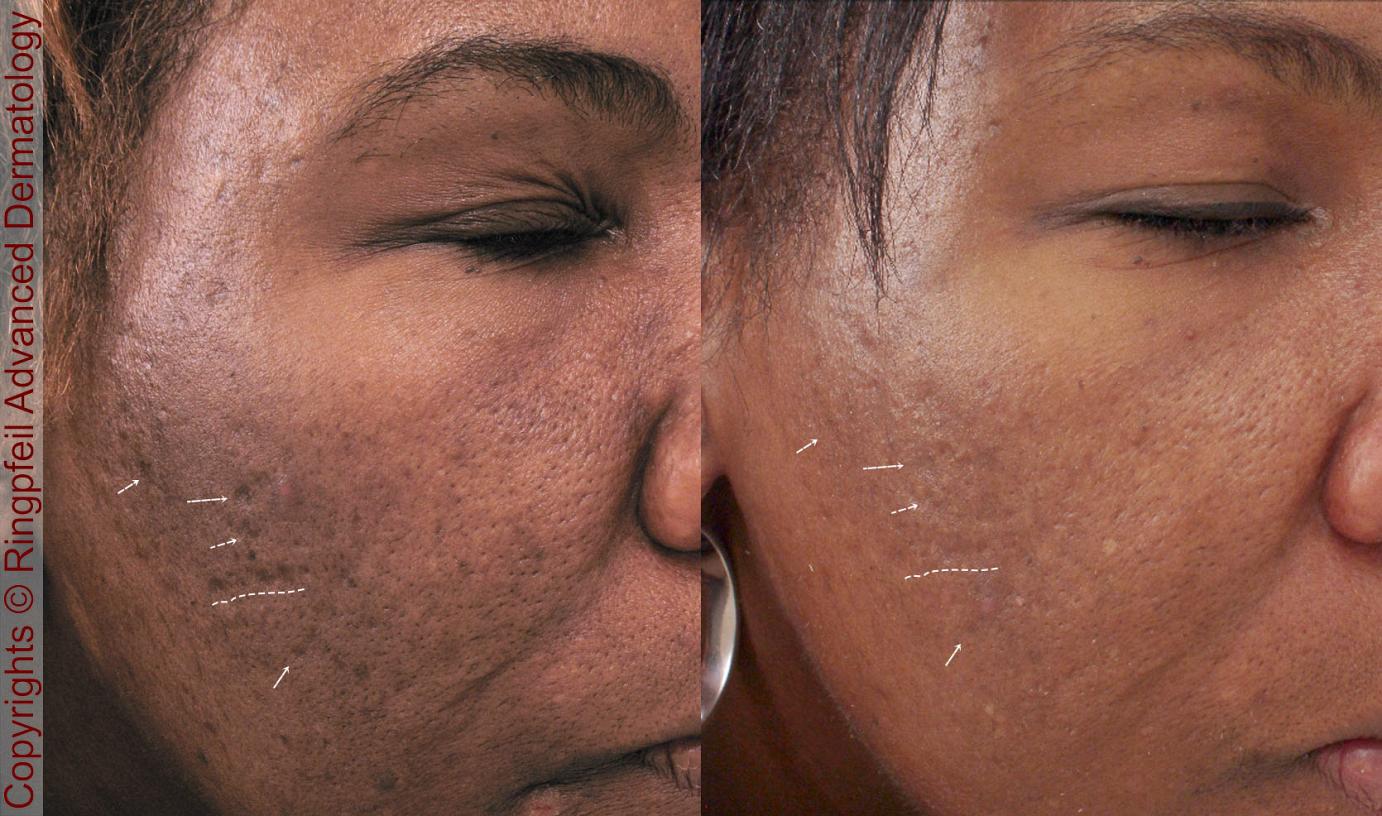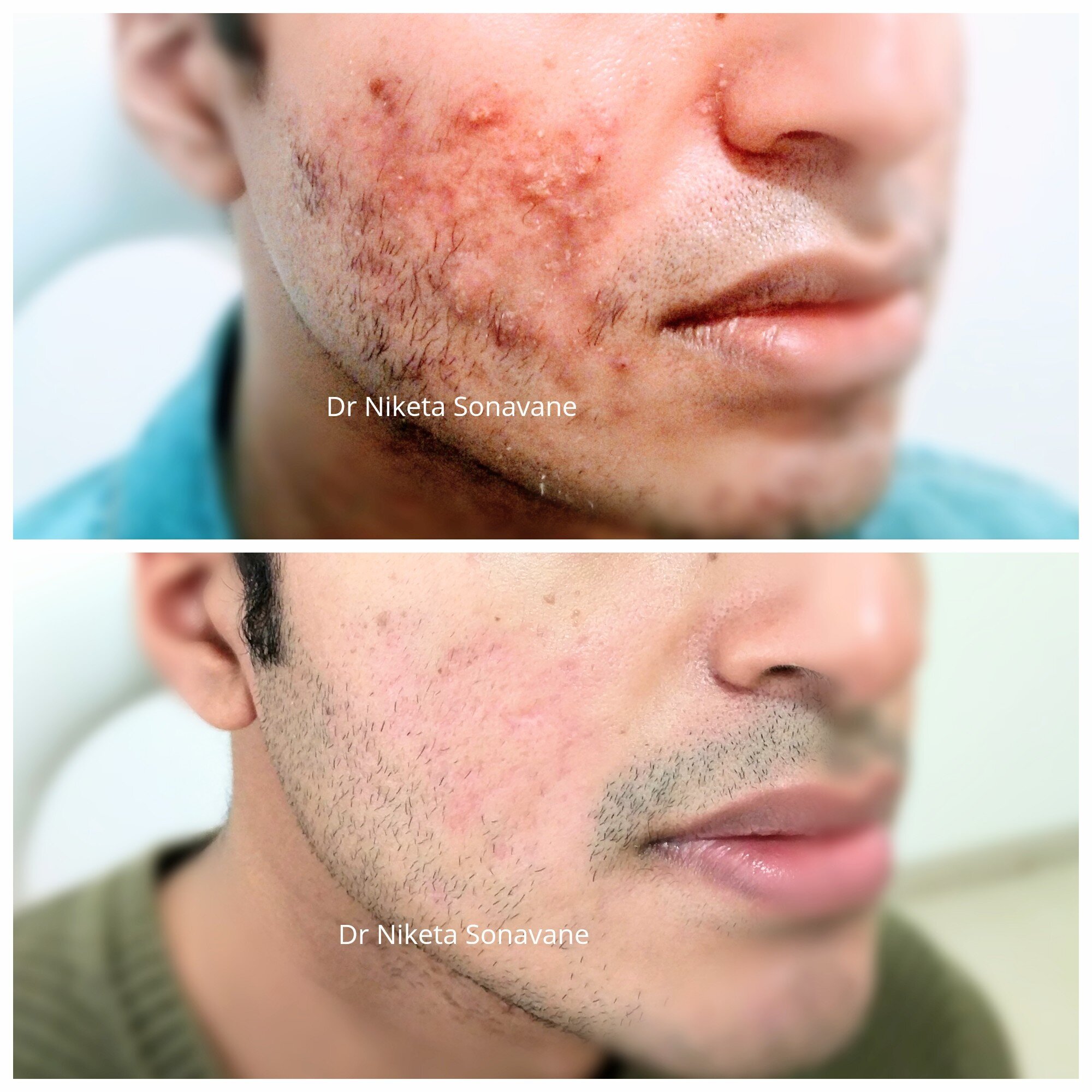Reliable Acne and Acne Scars Treatment: Clear Your Skin with Self-confidence
Reliable Acne and Acne Scars Treatment: Clear Your Skin with Self-confidence
Blog Article
A Comprehensive Overview to Handling Skin Problem: Concentrating On the Therapy of Acne Marks
Acne marks stand for a substantial issue for lots of individuals, frequently influencing self-confidence and total skin health. Recognizing the different kinds of acne scars, such as atrophic and hypertrophic, is important for efficient administration and treatment.
Recognizing Acne Marks
Understanding acne scars entails recognizing the intricate interplay in between skin healing and the inflammatory processes that occur during acne break outs. Acne establishes when hair follicles end up being obstructed with oil, dead skin cells, and germs, causing swelling. This inflammatory response is crucial for combating infection but can additionally cause damage to the skin's cells.
When the body attempts to heal itself, it generates collagen, a protein crucial for skin structure. However, the quantity and top quality of this collagen can vary, bring about various types of marks. Elements affecting scar formation consist of the extent of the acne, specific skin kind, genetics, and the body's healing action.
Timely monitoring of outbreaks lessens swelling and cells damage, which are crucial variables in scar advancement. Inevitably, comprehending the hidden systems of acne and its recovery process is important for reliable monitoring and avoidance of acne marks.
Kinds Of Acne Scars
The complexity of acne marks can be categorized into several distinctive types, each showing the underlying skin damage and healing action. One of the most common types include atrophic scars, hypertrophic marks, and keloids.
Atrophic marks are identified by anxieties in the skin and are frequently the result of not enough collagen production throughout the recovery procedure. These scars can further be identified into icepick, boxcar, and rolling marks, each varying fit and deepness. Icepick marks are narrow and deep, appearing like tiny leaks, while boxcar scars have a bigger, extra angular look. Rolling scars create a wave-like appearance on the skin's surface.
Hypertrophic scars, on the other hand, are raised and arise from an overproduction of collagen throughout recovery. These scars might vary in size and can occasionally discolor gradually yet may stay prominent.
Keloids are a much more extreme form of hypertrophic scarring, extending past the initial injury site and usually requiring much more hostile therapy options. Understanding these kinds is vital for figuring out the most effective therapy approach tailored to an individual's certain mark kind and skin disease.
Topical Treatments

Topical therapies play a critical duty in taking care of acne marks, offering clients a variety of options aimed at boosting skin appearance and look. These therapies mostly focus on advertising skin regrowth, lowering pigmentation, and enhancing total skin tone.
One of one of the most extensively made use of topical agents is retinoids, which are by-products of vitamin A. Retinoids promote collagen manufacturing and speed up cell turn over, helping to diminish the look of marks over time. Additionally, alpha hydroxy acids (AHAs) and beta hydroxy acids (BHAs) can exfoliate the skin, getting rid of dead skin cells and advertising a smoother surface.
One more reliable category consists of topical anti-oxidants, such as vitamin C, which Discover More Here can aid to lighten hyperpigmentation related to acne marks while supplying anti-inflammatory advantages. In addition, silicone gels and sheets have been shown to hydrate and squash scars, making them less obvious.
Hydroquinone is commonly made use of for its skin-lightening homes, although it should be used meticulously because of prospective adverse effects. Including creams that consist of ingredients like hyaluronic acid can better support skin healing and enhance structure. For optimum results, it is suggested to seek advice from a skin specialist for personalized therapy recommendations.

Specialist Therapy Choices
When it pertains to dealing with extra serious acne scars, clients often turn to specialist therapy choices that can provide more remarkable results than topical treatments alone. These treatments are commonly administered by skin doctors or accredited practitioners and consist of different techniques customized to individual skin kinds and scar severity.
One of the most common therapies is chemical peels, which utilize acids to scrub the skin and advertise regrowth. This strategy can dramatically reduce the look of superficial scars. Microneedling, another efficient choice, entails developing micro-injuries in the skin to promote collagen production, enhancing appearance and lessening marks.
Laser therapy is likewise widely utilized, with fractional lasers particularly targeting scarred regions while protecting bordering skin. This method can yield remarkable renovations in skin appearance over several sessions. Furthermore, facial fillers are made use of to recover volume and ravel uneven skin surface areas, providing prompt, albeit momentary, outcomes.
Way Of Life and Natural Remedy
Integrating way of living modifications and natural remedy can play a considerable duty in handling acne scars, complementing specialist treatments. Maintaining a well balanced diet rich in vitamins, anti-oxidants, and minerals can help with skin healing - acne and acne scars treatment. Foods high in vitamin C, such as citrus fruits, and those containing zinc, like nuts and seeds, promote skin regeneration and aid go to this web-site reduce swelling
Hydration is additionally vital; drinking sufficient water keeps the skin hydrated, aiding in its all-natural repair service procedures. Regular workout boosts blood flow, which can improve nutrient shipment to the skin and boost general skin tone.
In enhancement to nutritional adjustments, including topical natural remedy can be useful. Natural components such as aloe vera, tea, and honey tree oil have anti-inflammatory and anti-bacterial residential or commercial properties, which may help in lowering the appearance of marks. Exfoliating the skin with gentle scrubs can additionally promote cell turn over, assisting in the fading of marks over time.
Furthermore, developing a regular skin care regimen that includes sunlight protection is essential, as UV exposure can darken marks. By combining these way of living modifications and home remedies, individuals can boost their skin's recovery procedure and accomplish a more even skin tone.
Conclusion
Efficient administration of acne scars necessitates a thorough understanding of their kinds and the underlying devices associated with scar formation. A combination of topical therapies, expert therapies, and way of life modifications can dramatically enhance skin recovery and lessen scar exposure. Stressing the relevance of collagen manufacturing, a balanced diet plan, and a consistent skincare routine adds to boosted skin health and wellness. Eventually, a multifaceted approach makes sure ideal end results in the treatment of acne marks, fostering restored confidence in people impacted by this problem.
Comprehending acne scars entails recognizing the complicated interplay between skin recovery and the inflammatory procedures that take place throughout acne important link outbreaks. Aspects affecting mark formation consist of the intensity of the acne, individual skin kind, genetics, and the body's healing reaction.
These scars can further be identified right into icepick, boxcar, and rolling scars, each differing in form and deepness. Icepick scars are slim and deep, looking like tiny punctures, while boxcar scars have a bigger, much more angular appearance (acne and acne scars treatment).Effective monitoring of acne scars demands a detailed understanding of their types and the underlying mechanisms entailed in scar development
Report this page